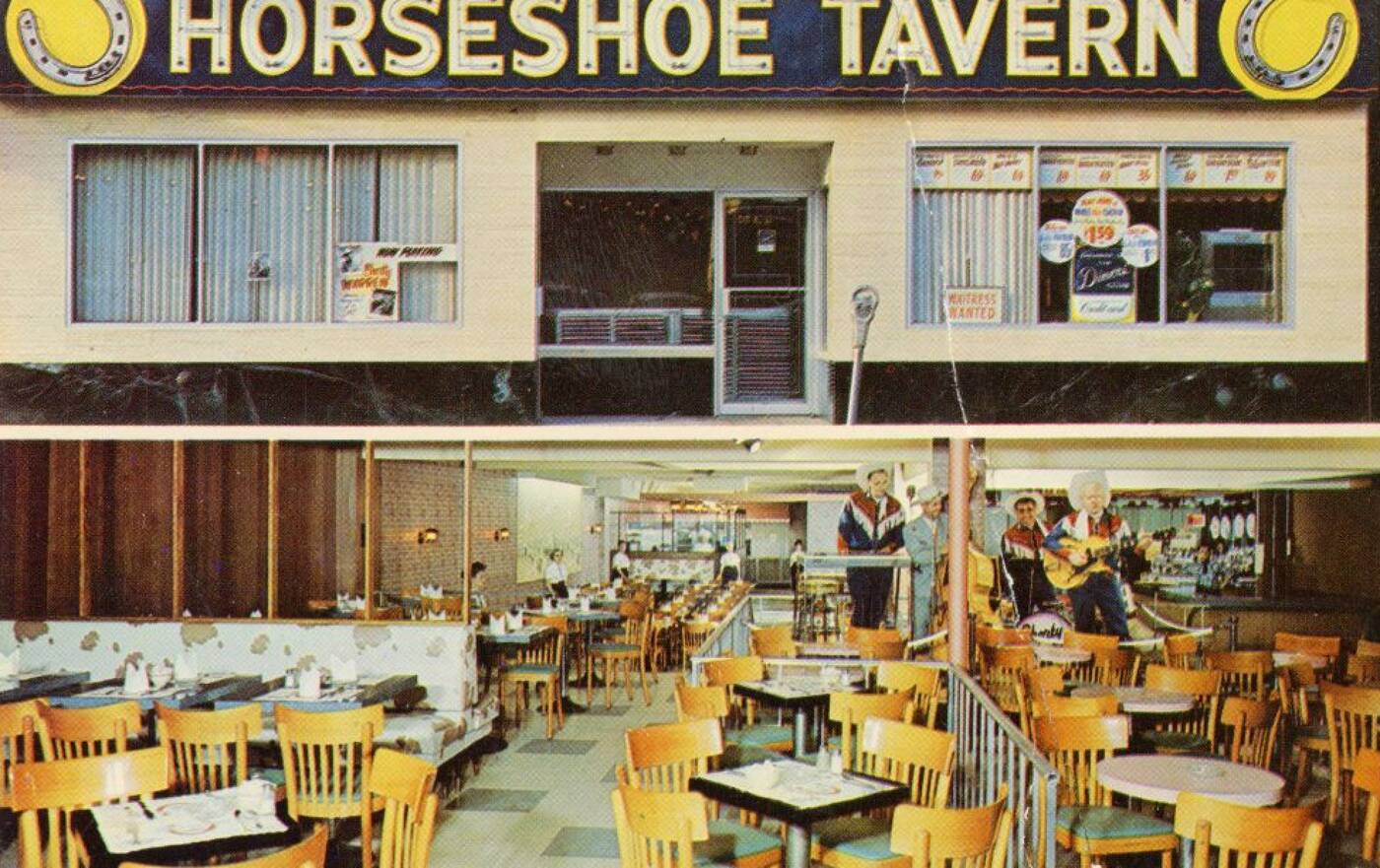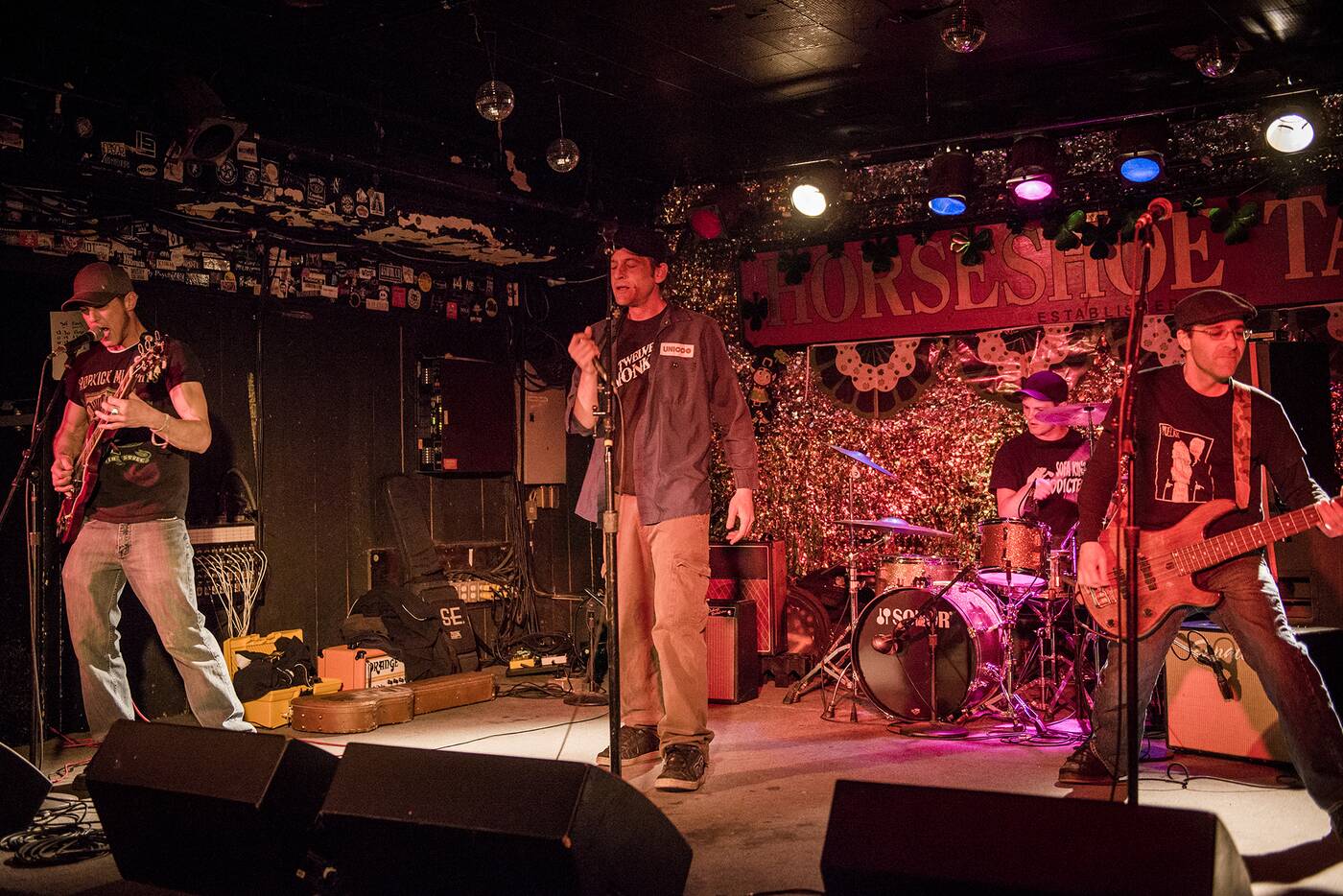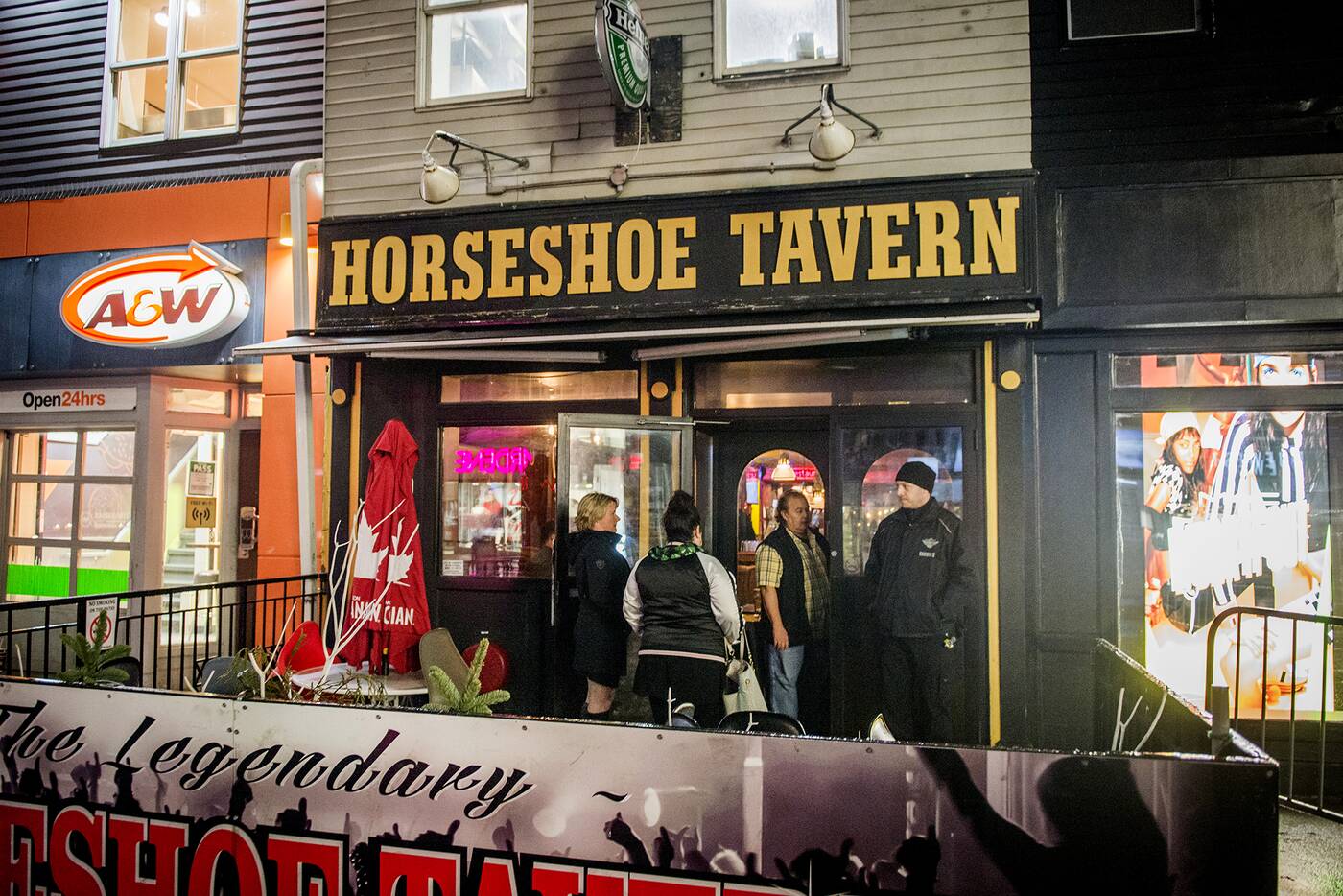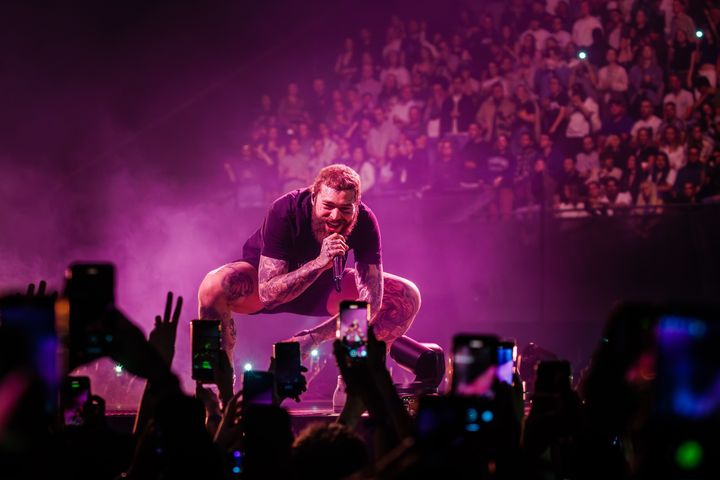
The history of the Horseshoe Tavern in Toronto
There is no live music club in Toronto with more history attached to it than the Horseshoe Tavern.
Beyond just longevity, the Queen West institution has played a central role in each generation of Toronto's music scene since the '50s.
Even more impressive is that it's managed to maintain its unique country-bar-in-the-city identity, adjusting only slightly with each passing of the torch.
The building at 370 Queen West was originally built in 1861, and was initially a blacksmith shop (which is perhaps the source of its later name).
It went through several other incarnations for many decades, including a shoe shop and a fancy goods store. It wasn't until 1947 that a change in Ontario's liquor laws inspired Jack Starr to convert it into a tavern, which opened December 9 of that year.

The Horseshoe Tavern back when it was a rockabilly bar. Photo via the Horseshoe Tavern.
In the beginning, the focus was more on beer and food, but in the mid-50s Starr gutted the kitchen, built a stage and began booking country and rockabilly acts.
Even as the rock'n'roll revolution swept the rest of the world, Starr continued to keep the focus on country acts by hiring Dick Nolan and his Blue Valley Boys as the house band, and by bringing in big name touring acts.
This first golden era of the 'Shoe was a great success, and attracted twang royalty like Willie Nelson, Conway Twitty, Waylon Jennings, the Carter Family, Loretta Lynn, Kitty Wells and many more.
It was also where a young Stompin' Tom Connors started building a name for himself. Connors played extended residencies at the Horseshoe, at one point hitting the stage for 25 nights in a row, and eventually recorded a live album as well as two concert films at the venue.
The 60s and early 70s saw folk acts like Ian and Sylvia becoming part of the mix, and rock acts like the Band also found a home there.
However, trends were shifting, and Starr wanted to pass the reigns to someone else, so in 1976 local promoters the Garys (a.k.a. Gary Topp and Gary Cormier) took over operations and opened the doors to the emerging punk scene.
Their bookings were wildly eclectic, and far ahead of their time. You could catch proto-punk acts like the MC-5, the Cramps and Talking Heads, but also people like blues innovator Taj Mahal and a young Tom Waits.
They famously brought the Police to Toronto for the first time in 1978, although they played to embarrassingly tiny crowds. Unfortunately, that kind of thing was more common than not, and the cutting edge approach wasn't paying the bills.
On December 1, 1978, the Garys' reign came to an end with a bang. Their final night at the club featured some of the biggest names in the Toronto punk scene, but by the end of the Viletones' raucous set the mood was starting to get rowdy.
One song into headliners Teenage Head's set, Gary Topp announced that the cops were shutting down the show, and the club erupted into a riot.
The infamous night was captured on film and released as The Last Pogo, and is considered one of the defining moments of that era. The Garys would go on to become major players in the local concert promoting business, but at this point Toronto wasn't quite ready for them.
The venue struggled for several years after that notorious night. It was briefly a strip club and was also turned into a 50s themed dance club called Stagger Lee's for a period.
It wasn't until 1983 that a new group of partners came in with a vision to turn the bar around and to bring the focus back to live music.
Kenny Sprackman had already turned the Hotel Isabella into a new wave hotspot, and had struck up a friendship with Starr, who still owned the building.
Sprackman teamed up with Michael Macrae and Richard Kruk (and according to some accounts Dan Aykroyd), and started a new era for the Horseshoe.
One of the things they brought to the table was to completely rethink how to approach booking. Instead of dealing with the musician's union, they offered bands the proceeds from the cover charge and kept the bar.
This system is now fairly standard across Canada in live music bars, but at the time it was quite new, and provided opportunities for emerging acts that were willing to work hard to get a crowd out.
They also redesigned the layout, and created separate front and back rooms. But while they were making some big changes, country and roots music began to become more of the focus again, thanks to the explosion of the Queen West scene.
Acts like Blue Rodeo (whose label Risque Disque was run out of the basement) and Handsome Ned were playing country with a punk-inspired attitude, which fit as well with the new wave bands as it did with the old time roots rockers.

The bar at the Horseshoe Tavern. Photo by Hector Vasquez.
By the time the early 90s rolled around, the club was in transition again. Yvonne Matsell took over bookings, and focussed more on emerging folk rock acts like Lowest Of The Low, Rheostatics and Barenaked Ladies.
However, the combination of the recession and the beginnings of the grunge boom hampered that approach, and by 1995 it was time for a major rethink.
Enter Jeff Cohen, who'd been building a name for himself as a booker at places like the El Mocambo and the Apocalypse club.

Playing pool at the Horseshoe Tavern. Photo by Hector Vasquez.
Together with assistant Craig Laskey, they created Against The Grain promotions and brought a new energy to the club.
Their combination of punk rock and alt-country fit in perfectly with the history of the venue, and CFNY personality Dave Bookman's Nu Music Nights on Tuesdays helped brand the bar as the place to go to see tomorrows stars.
You might have stumbled upon Radiohead's Thom Yorke playing a solo set there in 1995, or maybe you remember early gigs by Arcade Fire, the Strokes, Billy Talent, the National, Death From Above, or Wilco (or maybe even Nelly Furtado).

On stage at the Horseshoe Tavern. Photo by Hector Vasquez.
You probably didn't actually make it into the Rolling Stones' legendary 1997 "surprise" show, but you definitely heard about it, and probably know the legend of Dan Aykroyd and John Goodman doing security and working behind the bar that night.
Since the 90s, the partners took over sister club Lee's Palace, ATG joined forces with promoter Amy Hersenhoren to create Collective Concerts, and ownership of the venue shifted to Jeff Cohen, Craig Laskey and Naomi Montpetit.

Outside the Horseshoe Tavern. Photo by Hector Vasquez.
In a city where so much history is torn down every month, it's comforting to see a living link to our cultural past that's still around and still relevant, and not just as a historical relic.
Patrick Cummins.
Latest Videos
Latest Videos
Join the conversation Load comments







